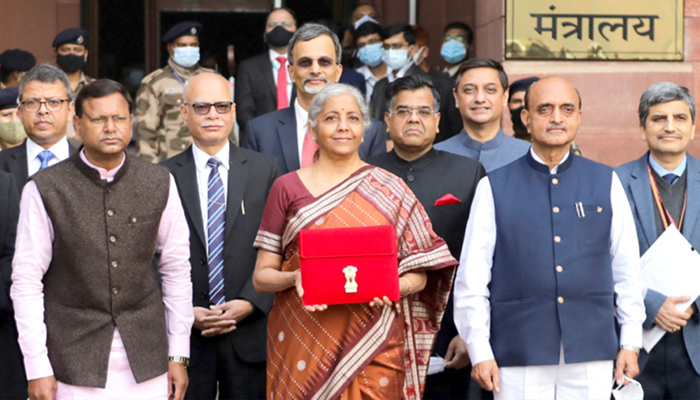
or

Prior to the budget announcement on February 1, 2022, the education sector stakeholders had high expectations from the budget of FY 2022-23. Given the effects of the pandemic (from March 2020 to March 2022) and the country’s struggle with under-education, these expectations are anything but unwarranted.
Para 46 of the budget speech commenced with “Due to the pandemic induced closure of schools, our children, particularly in the rural areas, and those from Scheduled Castes and Scheduled Tribes, and other weaker sections, have lost almost 2 years of formal education. Mostly, these are children in government schools.” However, the subsequent paragraphs fell short of the promise implied in the opening lines. Consequently, though laudable, the announcements did not follow through with the resolutions and concrete measures that the stakeholders expected from the (Indian) government.
Before critiquing the Budget 2022, it is pertinent to list the measures announced by the hon’ble finance minister (FM) Nirmala Sitharaman to bolster education and develop skills. The following are the key announcements made during the budget speech in relation to the education sector:
A Digital University is proposed to be established to provide students across the country with access to world-class quality universal education at their doorsteps. This will be made available in different Indian languages and ICT formats. The university will be built on a networked hub-spoke model, building cutting-edge ICT expertise. The best public universities and institutions in the country will collaborate as a network of hub-spokes.
World-class foreign universities and institutions will be allowed to operate in the Gujarat International Finance Tec-City (GIFT) to offer courses in Financial Management, FinTech, Science, Technology, Engineering, and Mathematics free from domestic regulations, except those by International Financial Services Centre Authority (IFSCA) to facilitate availability of high-end human resources for financial services and technology
The FM introduced the Digital Ecosystem for Skilling and Livelihood–the DESH-Stack e-portal, which aims to empower citizens to skill, reskill, or upskill through on-line training. It will also provide API-based trusted skill credentials, payment, and discovery layers to find relevant jobs and entrepreneurial opportunities.
It is quite evident from the above that the budget failed to address the elephant in the room – i.e., 6% GDP funding for the education sector. The 6% figure has been in place since the National Policy on Education 1968 and has been reaffirmed by the National Education Policy, 2020. However, despite the stakeholder demands, the allocation has been kept steady at (approximately) 3% of the GDP. Analyzing the budget allocations, revised estimates, and the actual expenditure (2018 onwards) also allows us to deconstruct the 11.8% increase in the budget allocations advertised by the Ministry of Education, Government of India.
Basis the tabulated numbers, while the increment from INR 93,224 crores to INR 1,04,278 registers an 11.8% increase, the expenditure trends (in the above table) showcase that: (a) the budget estimates widely differ from the actual expenditure, ranging between INR 4,000 crores to INR 5,000 crores (excluding financial year 2020); and (b) the revised estimates for FY 2021-22 are (approximately) INR 5,000 crores less than the budget estimates.
Consequently, while analyzing the 11.8% return, attention needs to be focused on the following two deficits: (a) the actual expenditure following the budget estimate of INR 1,04,278 crores will have a ball-park shortage of INR 4,000 crores to INR 6,000 crores; and (b) the shortfall in expenditure in FY 2021-22 (i.e. budget estimates vs revised estimates) is equal to (approximately) INR 5,000 crores. Therefore, the 11.8% increase in expenditure, in essence, is only a paper increment!
Further, while the budget has digitized the mode for imparting education in its attempt to offset the disadvantages triggered by the pandemic, the government has not bridged the existing gap between promise and reality, given that the majority of the rural population still has no access to high-end mobile phones and televisions as also laptops and computers for benefiting from the proposed digitized education.
To address the ‘real’ concerns that continue to bedevil the education sector, higher allocations to the sector are the need of the hour. In addition, specific reliefs, such as GST exemptions for technology and reduced rate of interest for loans by educational institutes, will allow schools and institutions to provide the envisioned access to education.
Tags: J. Sagar Associates
Sidharrth Shankar’s practice covers diverse areas of Corporate Commercial, Mergers & Acquisitions and Private Equity investments. He has been representing multi - national companies in cross - border transactions, advising on foreign direct investments, outbound investments, Joint Ventures, technology transfers and commercial contract issues. He has also handled some of the Capital Market related transactions such as FCCBs (Foreign Currency Convertible Bond) and GDRs (Global Depositary Receipts).

Lex Witness Bureau

Lex Witness Bureau

Lex Witness Bureau

For over 10 years, since its inception in 2009 as a monthly, Lex Witness has become India’s most credible platform for the legal luminaries to opine, comment and share their views. more...
Connect Us:


The Grand Masters - A Corporate Counsel Legal Best Practices Summit Series
www.grandmasters.in | 8 Years & Counting
The Real Estate & Construction Legal Summit
www.rcls.in | 8 Years & Counting
The Information Technology Legal Summit
www.itlegalsummit.com | 8 Years & Counting
The Banking & Finance Legal Summit
www.bfls.in | 8 Years & Counting
The Media, Advertising and Entertainment Legal Summit
www.maels.in | 8 Years & Counting
The Pharma Legal & Compliance Summit
www.plcs.co.in | 8 Years & Counting
We at Lex Witness strategically assist firms in reaching out to the relevant audience sets through various knowledge sharing initiatives. Here are some more info decks for you to know us better.
Copyright © 2020 Lex Witness - India's 1st Magazine on Legal & Corporate Affairs Rights of Admission Reserved